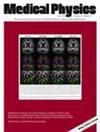Recently, magnetic resonance imaging (MRI) has become a crucial medical imaging technology widely used in clinical practice. However, MRI faces challenges such as the lengthy acquisition time for k-space data and the need for time-consuming manual annotation by radiologists. Traditionally, these challenges have been addressed individually through undersampled MRI reconstruction and automatic segmentation algorithms. Whether undersampled MRI segmentation can be enhanced by treating undersampled MRI reconstruction and segmentation as an end-to-end task, trained simultaneously, rather than as serial tasks should be explored.
We introduce a novel Transformer- and Joint Learning-based Dual-domain Network (TJLD-Net) for undersampled MRI segmentation.
This method significantly enhances feature recognition in the segmentation process by fully utilizing the rich detail obtained during the image reconstruction phase. Consequently, the method can achieve precise and reliable image segmentation even with undersampled k-space data. Additionally, it incorporates an attention mechanism for feature enhancement, which improves the representation of shared features by learning the contextual information in MR images.
Simulation experiments demonstrate that the segmentation performance of TJLD-Net on three datasets is significantly higher than that of the joint model (RecSeg) and six baseline models (where reconstruction and segmentation are regarded as serial tasks). On the CHAOS dataset, the Dice scores of TJLD-Net are, on average, 9.87%, 2.17%, 1.90%, 1.80%, 9.60%, 0.80%, and 6.50% higher than those of the seven compared models. On the ATLAS challenge dataset, the average Dice scores of TJLD-Net improve by 4.23%, 5.63%, 2.30%, 1.53%, 3.57%, 0.93%, and 6.60%. Similarly, on the SKM-TEA dataset, the average Dice scores of TJLD-Net improve by 4.73%, 12.80%, 14.83%, 8.67%, 4.53%, 11.60%, and 12.10%. The novel TJLD-Net model provides a promising solution for undersampled MRI segmentation, overcoming the poor performance issues encountered by automated segmentation algorithms in low-quality accelerated imaging.


